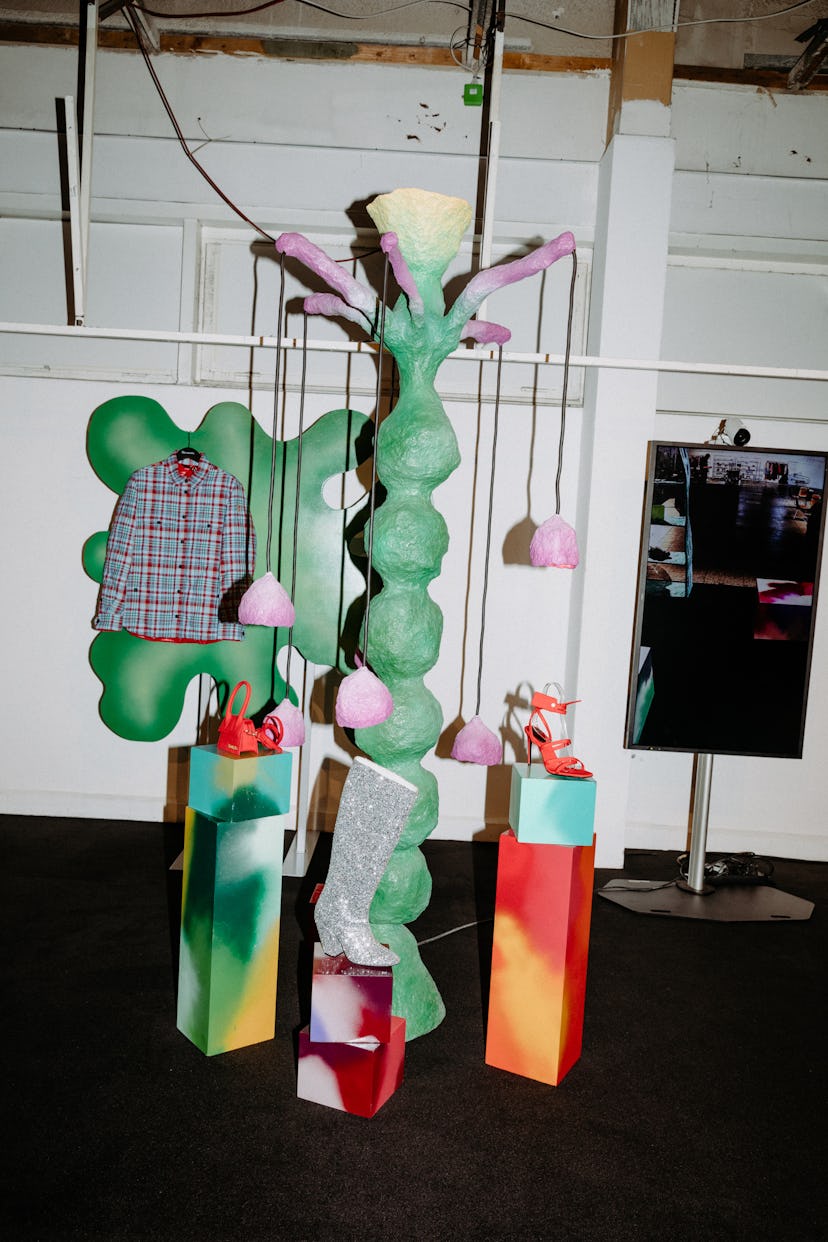Browns Fashion Creates Alternative Retail Experience in Berlin (Free Tattoos Included)

Browns Fashion landed in the German capital this past weekend.
If you’ve spent much time in Berlin, you know that the city is fueled by, and revolves around, club culture. To that, much of Berlin’s most influential art, fashion and design is spurred by what happens at night.
From this past Thursday to Sunday, the London concept shop Browns Fashion transported itself to the German capital and tapped into the city’s nightlife community. They took over an abandoned supermarket in Mitte, and brought in a curated-for-Berlin selection of Prada, Bottega Veneta, and Gucci—the usual suspects—along with a more youth-glancing mix that consisted of Georgian designers, sustainable visionaries like LVMH semi-finalist Duran Lantink and newcomer Mariah Esa, natural Berlin fits like Matthew Williams’ 1017 ALYX 9SM, along with artists and performers. This was the third iteration of “Browns Nomad”—an ongoing series where the London shop and e-tailer travels around the globe and sets up temporary activations in various metropolises.
The industrial space was an apt fit for the retail-cum-experiential takeover. And an appropriate, raw place for doing something a little more experimental in retail. After all, with brick-and-mortar shopping in a state of flux, traditional in-person shopping standards are breaking down and being morphed.
Tattoo artist Louis Loveless, known for his dark, glitched view on classical images, stayed up for 48 hours inking (for free) on site. (His makeshift studio was in a decommissioned refrigerator, bathed in red light.)
“I spend most of my time between Paris and Berlin, yet my work differs very much in each place,” he mused. “So, when I’m in Paris, I tend to do more romantic images. [Here in] Berlin, it’s that kind of dark vibe. More gritty. That’s the roots we’re coming from. And if people can relate to that, then that’s cool. If they can’t, then don’t come to Browns.”
Next door to Loveless’s setup, Truth And/Or Consequences read shoppers palms. An all-female and non-binary collective called No Shade deejayed a late-night party. The artist Juliana Huxtable also took a turn on the decks.
The highlight may have been a performance by the artist duo OrtaMiklos and the dancer and artist Vinson Fraley Jr.
Here, Fraley Jr., an Atlanta native, sang and danced around a Lewis Carroll-inspired installation he and Miklos created. He slipped in and out of Browns’ pieces as he moved, providing the audience with what are normally very private moments. There was something entrancing about the sugary, Alice in Wonderland-setting combined with his motions. The space became ethereal and intimate, a palpable contrast to one’s standard shopping environment.
“We’ve found that, if you’re serious about brick-and-mortar—and that’s something that’s really important to us even though online is massive—the physical experience should tell a story in a different way,” said Browns’ Director of Men’s and Women’s buying Ida Petersson (who is famous in the industry for purchasing John Galliano’s graduation collection, in its entirety). “For us, immersion is key. And Germany is our largest market.”
“The idea is to give you a super sharp edit of what we are excited about and what Browns Fashion stands for,” said Petersson. “We looked at: What is the German market buying, what brands do they love, what do they gravitate towards? Then we mixed that with the discovery part. You can have your palm read, you can have your tattoos, you can have the art experience as well, and blend them all together. Those young brands especially—they needed to be here for us.”
The edit the Browns brought in reinterpreted 90s minimalism through a rougher, harder edge.
“I think a lot of people are scared today, but actually for me, where we are, I think it’s exciting,” said Petersson, referencing physical retail’s uncertain position.
“I think being in a space that we don’t entirely know is exciting, because it means that we can experiment, and we can engage without being restricted by the standard walls. That’s the important thing. As long as you look forward, as long as you explore, as long as you continue to like try to reimagine what retail is. I think that’s what will keep people coming to a physical space. And it evolves. The preconception with brick-and-mortar is that a lot of people feel it’s a static experience. But it’s not. It doesn’t have to be.”
And just maybe, if this space is free and dynamic enough, it can turn the wheel on the little ideas and conversations and kinds of community that lead to creative beginnings (outside the club).